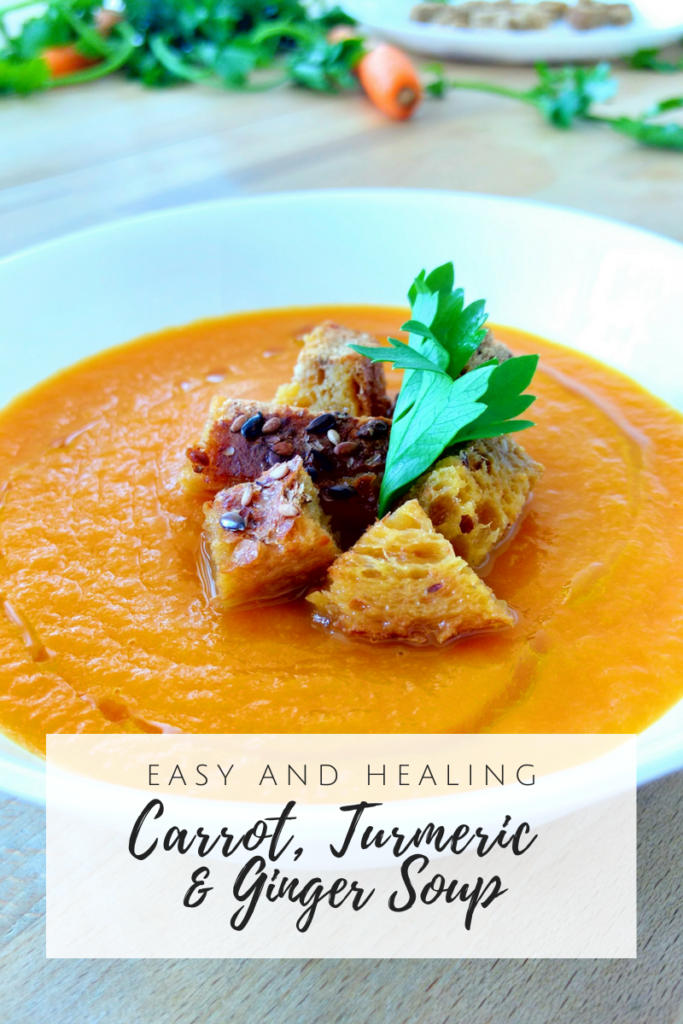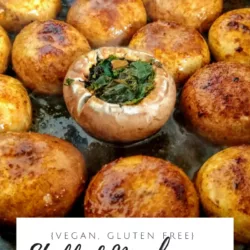Carrot, Turmeric & Ginger Soup
Carrot, Turmeric & Ginger Soup {Vegan, Gluten-Free}
- Originally Published:
- Last Modified: May 24, 2023
- Hannah Abreu
Carrots are a very versatile and nutritious vegetables, commonly used around the globe, raw and cooked, in a wide range of dishes, adding both taste and nutritional value. This particular recipe, Carrot, Turmeric and Ginger soup, is also a great opportunity for you to use those carrot tops and bottoms left behind after grating carrots. Turmeric and ginger are added for a kick, and because of their nutritional value as well.
When buying carrots, look for firm, smooth, and brightly colored ones. They can be stored in the refrigerator, either loose or in a perforated reusable plastic bag, for up to a few weeks. To maintain their freshness, it better to remove the green tops before storing as they can draw moisture from the carrot roots. But don’t worry, you don’t have to throw them out. Use the green carrot tops for salads, pesto, pastas or garnish.
If you forget a few carrots in the fridge, and they become soft, you can always revive them by soaking them in ice water and leave in the fridge for a few hours.
How to make Carrot, Turmeric Ginger soup
To make this Carrot, Turmeric and Ginger Soup is really easy. First, you need to create a flavorful base, which you’ll make by the sautéing the vegetables until they are somewhat caramelized. This process will provide deeper flavor than if you just add the broth right away. So, taking a little time with this step is worthy.
Since the carrot soup has to cook for a bit, hence evaporating some of the liquid added and concentrating the flavors, I advise you to add the salt once the cooking process has finished, and specially if you used regular store-bought vegetable broth, which is often rich in sodium.

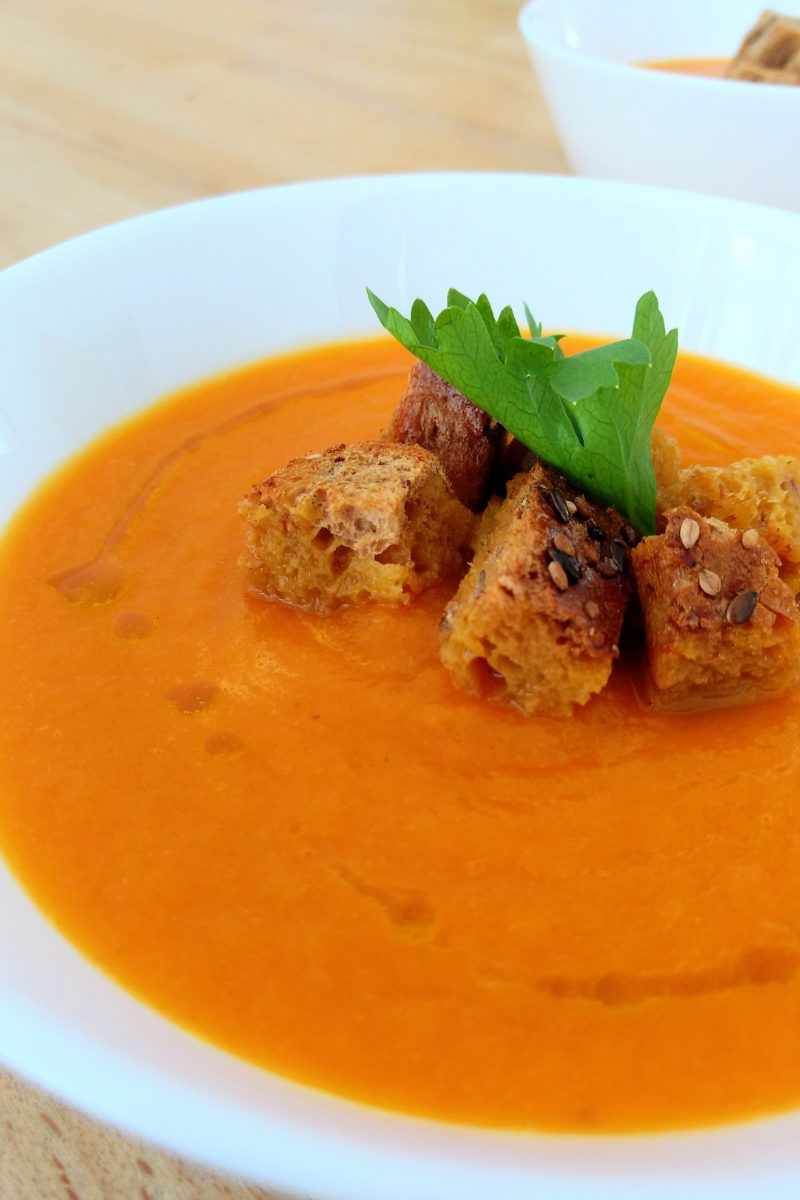
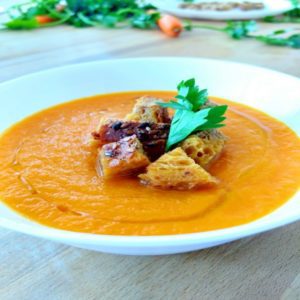
Carrot, Turmeric & Ginger Soup
Ingredients
- 100 gr Yellow onion, roughly chopped {about 2 medium onions}
- 1 Celery stalk, chopped
- 500 gr Carrots, chopped
- 500 ml Vegetable broth { up to 700 ml of homemade or pre-made}
- 10 gr Ginger root, peeled
- 3 tsp Turmeric powder {or to taste}
- 2 Garlic cloves, chopped {or 2 tsp of garlic powder}
- 1 ½ tsp Salt
Instructions
- To your pot add the oil and sauté the onion with a pinch of salt, until they are a nice light brown color. Be careful not to burn them or they will give an aftertaste to the soup.
- Add the celery, carrots, ginger root, garlic, turmeric, and sauté on medium high for about 5 minutes or until you get some caramelization in the veggies.
- Add the broth (start with 500ml. After the soup is blended you can add more if you want it thinner). Put the lid on and cook on medium low until all the veggies are cooked through. About 20 minutes.
- Lower the heat to a minimum and using an immersion blender blend the soup until smooth. Finish by adding salt to taste.
- Serve with a splash of olive oil or cream, and croutons.
Notes
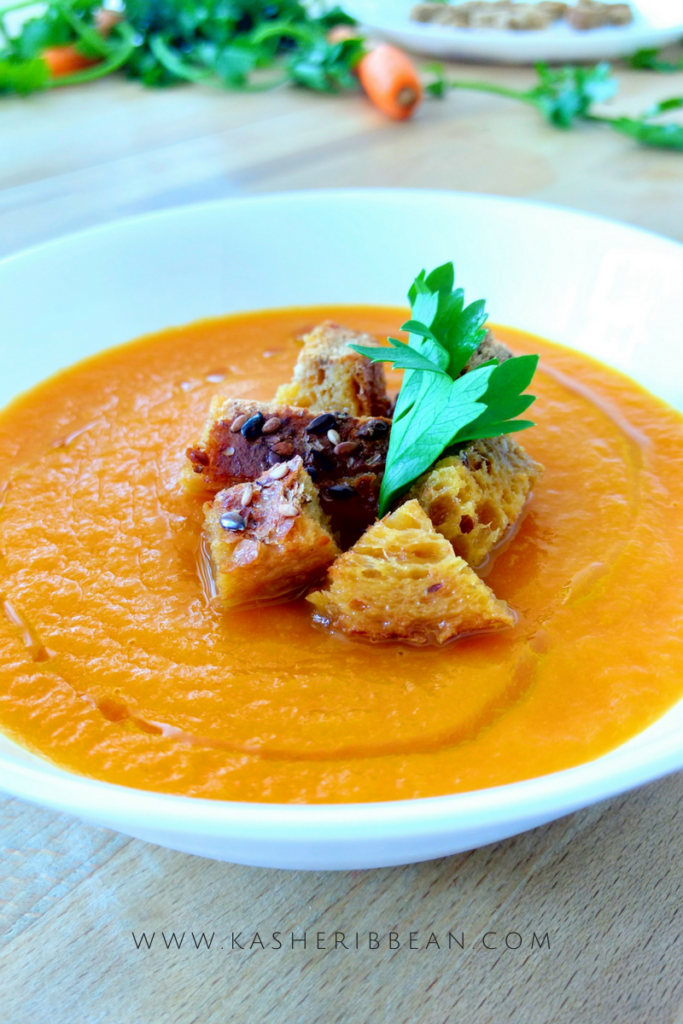
Carrot, Turmeric & Ginger Soup Read More »

